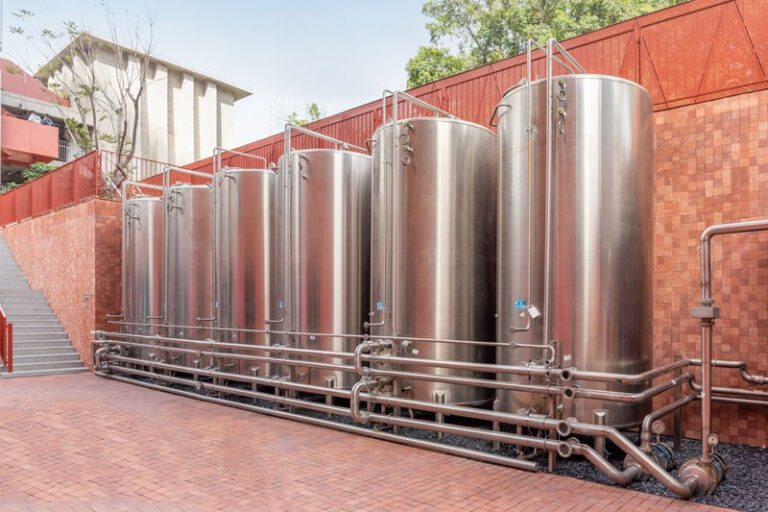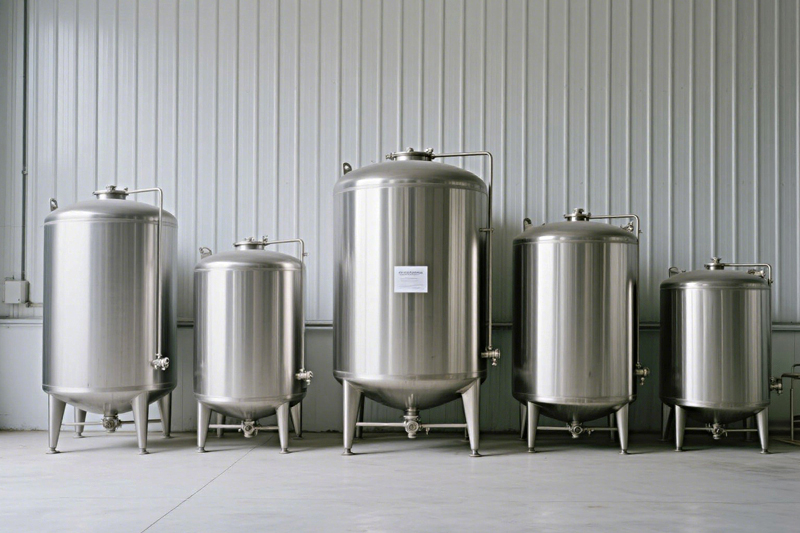With the continuous advancement of industrial technology, higher safety, hygiene, and durability requirements have been established for the storage and transportation of liquids, gases, and solid materials. Stainless steel storage tanks, with their superior physical properties, chemical stability and excellent corrosion resistance, have become one of the most commonly used and reliable storage equipment in many industries such as food, pharmaceuticals, chemicals, environmental protection, and new energy.
This article will systematically introduce the classification, main materials, design structure, performance characteristics, industry applications, selection recommendations, and precautions of stainless steel storage tanks to help brewers fully understand the technical points and practical value of stainless steel storage tanks.
Basic Overview of Stainless Steel Storage Tanks
Stainless steel storage tanks, as the name implies, are a type of closed container made of stainless steel for storing different media (such as liquids, slurries, gases, or powders). Its core function is to store the contents safely, stably and without pollution, and to provide good support conditions during transportation, heating, cooling, stirring and other processes.
The volume of commonly used stainless steel storage tanks ranges from tens of liters to thousands of cubic meters. According to the structure, they can be divided into vertical, horizontal, single-layer, double-layer, jacketed, insulated, with or without stirring, etc., which can meet the production process requirements in different scenarios.
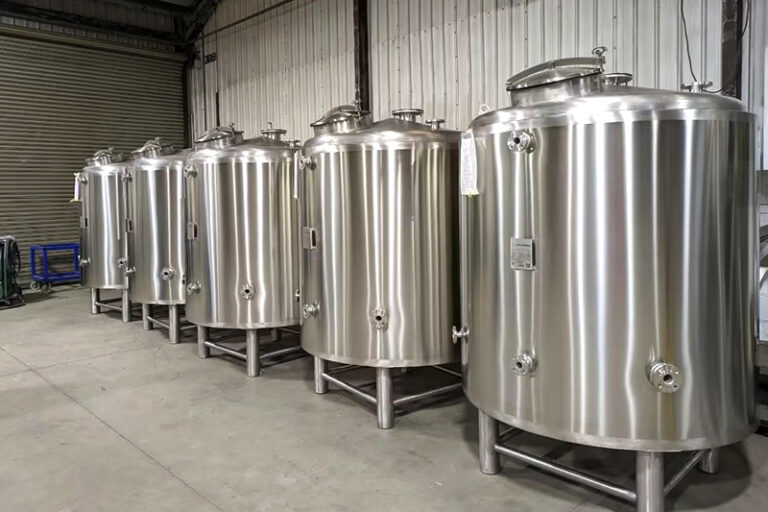
Introduction and selection of stainless steel materials
The performance of stainless steel storage tanks depends largely on the type of steel used. At present, the most widely used is austenitic stainless steel, mainly including:
- SUS 304: This is the most commonly used food-grade stainless steel, with good corrosion resistance and processing performance, suitable for most water-soluble liquids, food, beverages, alcohol, cosmetics and other storage scenarios.
- SUS 316 / 316L: Molybdenum is added to 304 to enhance the corrosion resistance to chloride ions and acidic substances, and is more suitable for pharmaceuticals, seawater treatment, high-purity chemicals and other high-demand environments.
- SUS 321 / 310S / 904L: Suitable for high temperature and high corrosion environments, used in special working conditions in the chemical, pharmaceutical and new energy industries. The price is relatively high and is usually used for customized projects.
Structural composition of stainless steel storage tanks
A standard stainless steel storage tank usually consists of the following main structural parts:
- The tank body and tank bottom: The main part is designed into a cylindrical, elliptical or spherical bottom according to process requirements.
- Tank cover (top): There are closed, open, manhole and other designs, which can be equipped with accessories such as pressure gauges, safety valves, and breathing valves.
- Legs/brackets: Provide support and stability. Vertical tanks are often supported by tripods or skirts, and horizontal tanks use saddles.
- Jacket and insulation layer: Used to heat or cool liquids, the jacket can be passed through steam or cooling water, and external insulation materials are usually polyurethane, rock wool, etc.
- Stirring device: If mixing, emulsification, reaction and other functions are required, an electric stirrer can be installed, including anchor type, paddle type, magnetic stirring, etc.
- Discharge port, liquid level gauge, cleaning port (CIP): Convenient operation and maintenance.
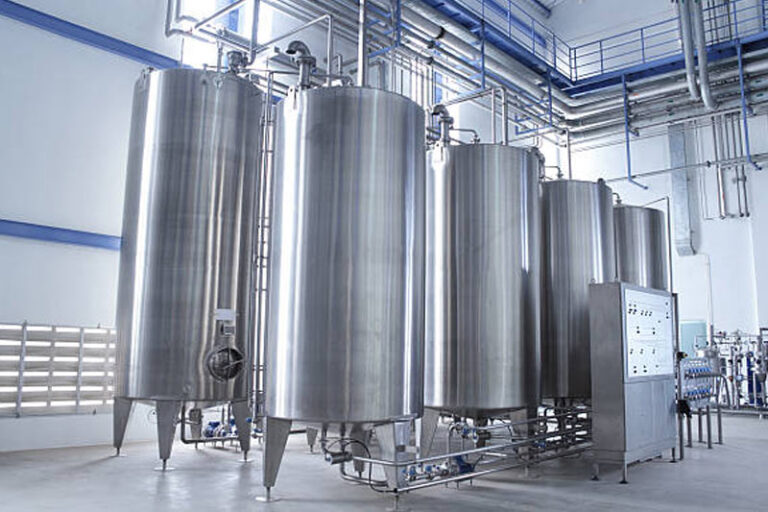
Performance advantages of stainless steel storage tanks
Excellent corrosion resistance
Stainless steel materials can resist corrosion from most acids, alkalis, and salts, especially in the production process of food and medicines, which can effectively prevent the infiltration of impurities and the growth of microorganisms, ensuring the purity and safety of the contents.
High structural strength and long service life
Compared with plastic, fiberglass, and other materials, stainless steel storage tanks have higher mechanical strength, are not easy to deform, burst or age, and have a service life of more than 15 years with low maintenance costs.
Good hygienic performance
The surface of stainless steel is smooth and flat, bacteria are not easy to adhere to, and it can withstand high-temperature disinfection. It complies with international hygienic standards such as GMP and FDA and is widely used in the pharmaceutical, food, and medical industries.
Strong customizability
Stainless steel tanks can be customized according to user needs for a variety of processes, such as stirring, temperature control, jacket cooling, vacuum structure, reaction function, etc., and can be flexibly adapted to a variety of production processes.
Beautiful and durable
Stainless steel tanks are often treated with mirror or matte polishing, which not only has a modern appearance but also improves anti-pollution ability. They are suitable for food or cosmetic workshops with high image requirements.
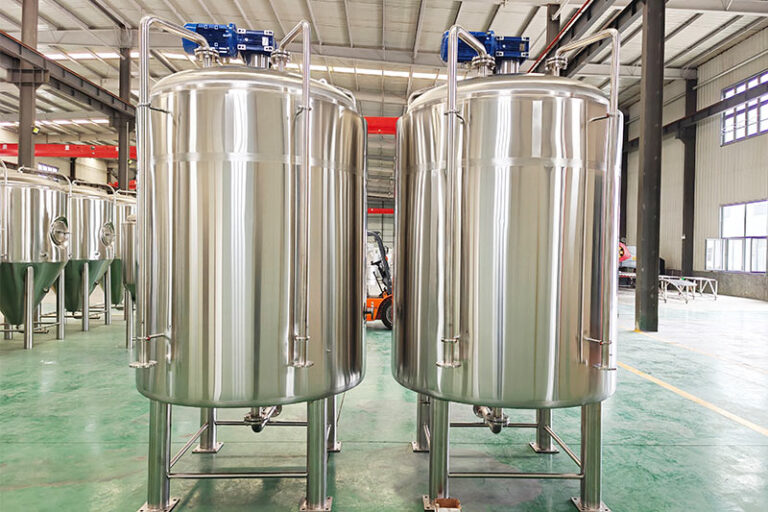
Industry application scenarios of storage tanks
Food and beverage industry
Used to store beverage products such as milk, soy sauce, juice, beer, kombucha, etc., and can be used with a CIP cleaning system and sterilization device to achieve aseptic storage.
Pharmaceutical and bioengineering
Used to store high-purity media such as pure water, stock solution, culture medium, fermentation liquid, etc. Usually requires GMP standard configurations such as no dead corners, full welding, sterile exhaust, and clean manholes.
Fine chemical industry
In the production of fine chemicals, biopesticides, and daily chemical products, it is used to store raw material liquid, reaction liquid, etc. Some of them need to have pressure resistance, corrosion resistance, and high-temperature resistance.
New energy and environmental protection
It is used for high-precision liquid storage and circulation treatment in the fields of hydrogen energy, electrolyte, battery slurry, sewage treatment, etc., and some of them involve explosion-proof and leak-proof designs.
Suggestions for stainless steel tank selection
- Nature of contents: Is it corrosive? Does it need to be stirred? Does it need to be kept warm or cooled?
- Capacity: Reasonably determine the capacity according to the daily processing volume or turnover cycle to avoid excessive or frequent replacement.
- Pressure requirements: Ordinary storage tanksare designed for normal pressure. If pressure is required (such as gas or stirring reaction), the pressure vessel grade should be selected.
- Cleaning and maintenance method: It is recommended to select a CIP cleaning interface to facilitate daily maintenance and save labor costs.
- Budget and return: Reasonably balance equipment investment and later use costs to avoid quality affected by low-priced materials.
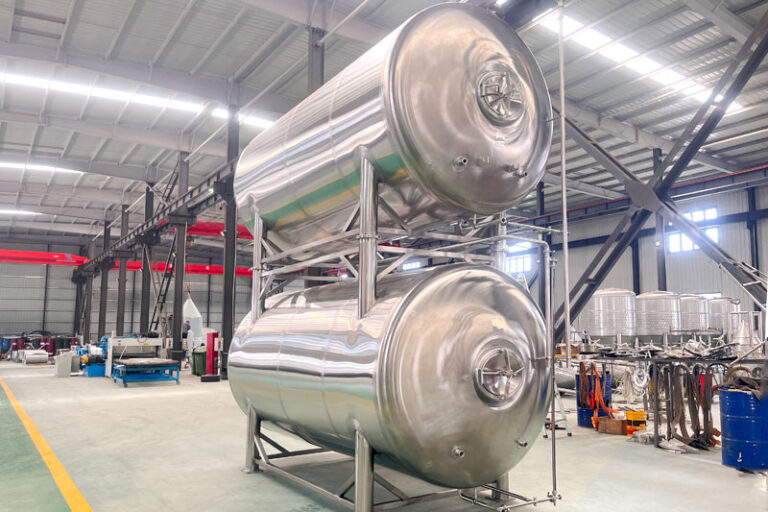
Notes on use and maintenance
Even though stainless steel storage tanks have excellent corrosion resistance and structural strength, they still need to be operated in a standardized manner and maintained regularly in daily use:
- Regularly check welds, valves, and flanges for leaks;
- Clean promptly after use to prevent residual contents from causing scaling or microbial growth;
- Storage tanks for different purposes should be labeled to avoid mixing;
- It is strictly forbidden to fill media that exceed the design temperature, pressure, or chemical properties;
- When the storage tank is idle, it should be kept dry and ventilated, and filled with nitrogen for protection if necessary.
Conclusion
Stainless steel storage tanks have become an indispensable part of modern industrial storage systems due to their excellent corrosion resistance, safety, cleanability, and applicability. From food production to chemical storage and transportation, from pharmaceutical fermentation to new energy applications, almost all fields with high requirements for storage media are using this high-performance container in large quantities. With the improvement of industrial standards and the acceleration of the demand for automation and intelligent development, stainless steel storage tanks will continue to upgrade and evolve towards higher integration, smarter control, and more environmentally friendly and energy-saving.
